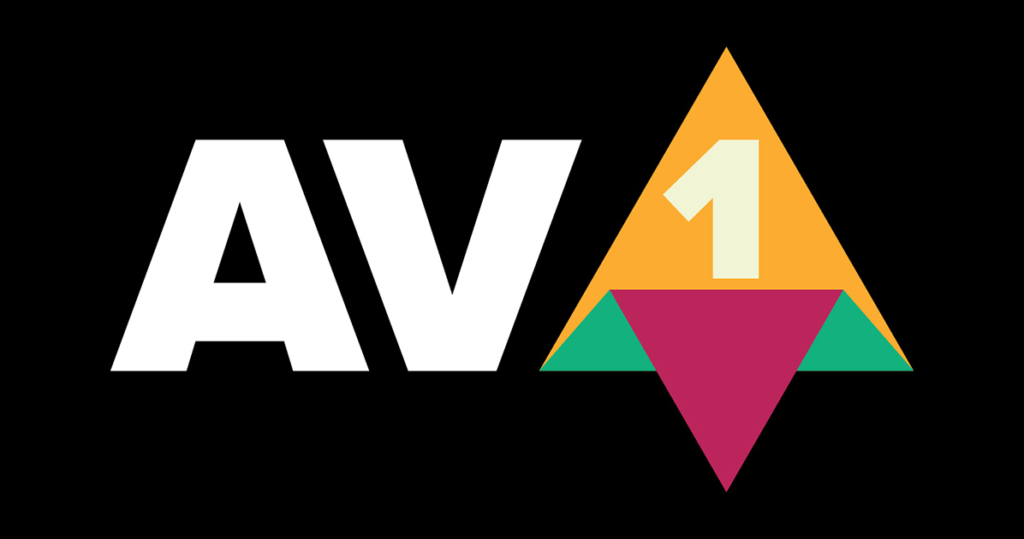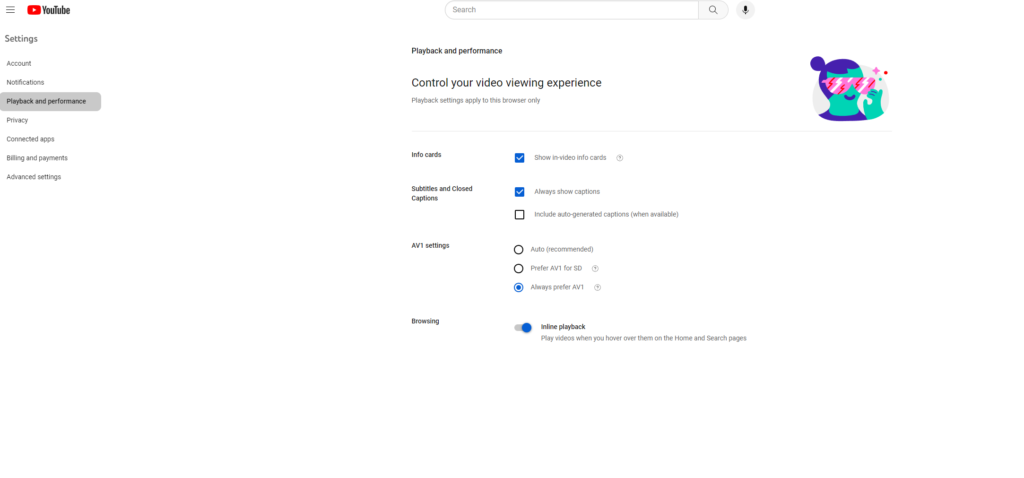For years, video game streamers — and OTT (over-the-top) media providers in general — have been looking for ways to improve their stream quality for viewers without breaking the bank. While some have had the ability to provide high-resolution content due to high-speed connections and equipment, others have struggled solely because of the connections or even lesser-than equipment. It’s left many to wonder just what can be done.
Luckily, there is something being done about. AV1 encoding is here and growing, and, with the backing of major tech companies, it’s bringing streaming to new heights.
What is Encoding?
Since the start of file transmissions via satellite or the internet, companies have looked for the best ways to send those files directly to recipients with little-to-no quality loss. That’s where encoding comes in. Encoding, in real simple terms, is the process of putting together a sequence of characters into a specific order and format for efficient transmission.
It’s how you get your YouTube video when you are laying in bed every night. It’s how you watch your favorite streamer during the day at work. Without encoding, these files would require massive data rates and internet speeds that it would be hard just to get a 720p video to look good.
“Storing these giant arrays of pixels is very expensive because, you know, even at 720 or 1080p, you’re still talking about millions and millions of pixels,” Intel’s Tom Petersen explained. “And all of those pixels are different ranges of values, so you need a compression scheme and that’s really what encoding is all about.”
For the better part of the last two decades, the best way to do this was via the H.264 (AVC) codec. At one point, over 90% of video industry producers and developers used AVC to provide their videos to consumers. That includes companies like YouTube, Twitch, Netflix, Amazon and more.
That’s all starting to change thanks to the progress behind a newer codec known as AV1.

What is AV1?
To keep it simple, AV1 is a codec developed by the Alliance for Open Media, a group of major tech companies including Microsoft, Intel, Nvidia, Google, and dozens of others. Initially released back in 2018, AV1 was designed as a way to transmit videos over the internet, but do so in a way that was more cost-efficient and provided quality video using less data and bandwidth.
What makes it special, in addition to its ability to compress files in ways the industry hadn’t seen yet, is the fact that it’s open-sourced and royalty-free. That second point is key because, unlike AVC and H.265 (HEVC) encoding, it doesn’t cost companies to simply use the codec. This has led to higher adoption rates and more development towards the codec.
“Being royalty-free is almost more important than being low royalty or manageable Royalty is more important than saying it’s the highest quality or it’s the most open,” Petersen believes. “We don’t need it to be open to [build on it] as long as we can get access to the algorithms from the owners.”
That access has allowed companies like Intel, Nvidia, AMD, and others to offer AV1 encoding to their consumers. In fact, it’s gotten to a point that adoption has been quicker for companies because of the technology benefits and the general cost.
“Everybody’s looking for savings on the network bandwidth and these encoder improvements definitely get it there,” Petersen said.
Why AV1 Encoding Changes Everything For Streaming
For the past two decades, AVC has been the standard codec for everything from game streaming to YouTube videos to Netflix and others. The problem has been, in addition to the cost mentioned above, there’s that belief within technology companies that AVC is at its peak with no more benefits on the horizon in compression. With AV1, however, compression rates have reached points of up to 50% smaller files at the same quality or bitrate as AVC with an average savings of 30%.
It’s become the most efficient codec improvement in generations.
With numerous internet service providers (ISP) imposing data caps on plans, the sizes of the files being streamed mean just as much to the viewer as it does to the streamer or the providing company.
Downstreaming high-quality videos while using less resources will help keep users from hitting those data caps as quickly as before. That means more time to watch on whatever platform they prefer, which, at the end of the day, is the ultimate goal for the Netflixes and YouTubes of the world.
In addition to possible data caps, it also helps those with lower-speed internet connections both stream and consume content. For years, there have been plenty of people that have wanted to watch 4K content, but just didn’t have the bandwidth to support it. With AV1, the ability to watch 4K — or even ultimately 8K — video becomes that much more accessible.
Take YouTube streaming, for example. With the AVC codec, you could find yourself using needing a bitrate — the number of bits (data) that can be transferred in a specific amount of time — of 6-8Mbps to stream 1080p60 at good quality. While it doesn’t sound like much, that adds up over a while, especially when you are streaming for hours at a time. With AV1, that bitrate can realistically drop to 3.5 Mbps to get the same exact quality performance.
A bitrate of just 6Mbps can get streams at 4K60 video without an issue. Crisp lines at 1440p with zero blury or blockiness at just 4Mbps. The idea of that happening three, four, or five years ago was unheard of to many.
So, if you’re a streamer with just a 10Mbps upload speed from your ISP, the idea of streaming high-quality video to viewers is no longer foreign. Now, it can be expected.
Where Does AV1 Go From Here?
With AV1 making its march to becoming the new industry standard in encoding, it’s reasonable to wonder what’s next for the codec.
First thing’s first is more adoption. It’s all well and good that the encoding is saving bandwidth and providing better quality at the cost of fewer resources. However, devices like tablets and cell phones — newer Google and Samsung devices are some that do — need to adopt AV1 decoding to get the full utilization of the codec.
There are also large streaming sites like Twitch that still haven’t implemented AV1 encoding for streamers.
Without broader support from major partners, it’s all moot.

Secondly, the development of future features and improvement is what will keep AV1 adoption moving forward.
“We’re not done,” Petersen says of the work on the codec. “The compression art and encoding art is constantly evolving.”
Petersen mentioned areas such as temporal algorithms and spatial algorithms that look at frame-to-frame variation to improve overall compression.
“I feel like this is still a hot area of research and you’ll see a continued advancement going forward,” he said.
With Intel specifically, AV1 was a plan from the get-go when the company decided to get back into the discrete graphics card business starting with the Intel Arc lineup of GPUs in 2022. And it’s only improving for future GPU releases such as the in-development battlemage.
One area specifically targeted for improvement is encoding “screen content” such as text and backgrounds which has been a sticking point in development in the past.
And, of course, there’s always the talk of cloud gaming hanging above the industry — no pun intended. With AV1 encoding, it’s always being worked on to improve the downstream of what those playing games on the cloud see. That said, Petersen doesn’t believe that AV1 will be, solely, what brings cloud streaming to the forefront of the industry.
“I don’t think Av1 is going to be the thing that changes the dynamics of cloud gaming simply because it’s a bigger problem that than just the the download or upload latency of compression,” he said.
“It’s really much more about distributing data centers globally. To keep that roundtrip latency through the network reasonable because it’s not so much the encoding quality that’s the problem. It’s the click through render in the cloud coming back down and the encode/decode is a relatively small component of that total lag. And so I feel like there’s a lot going on there, but I don’t feel like AV1’s the magic bullet right now. There’s more work to be done.”










